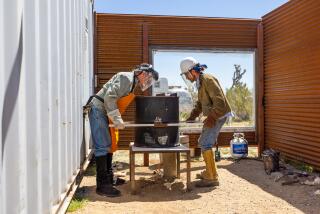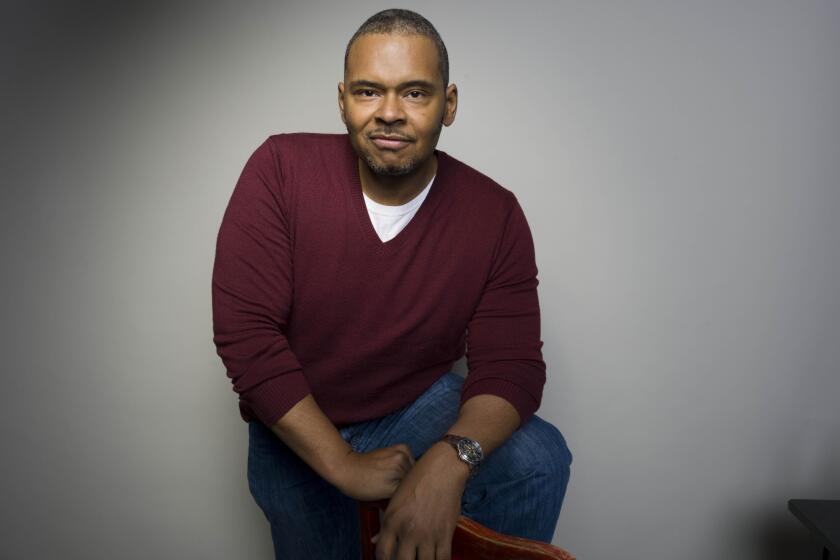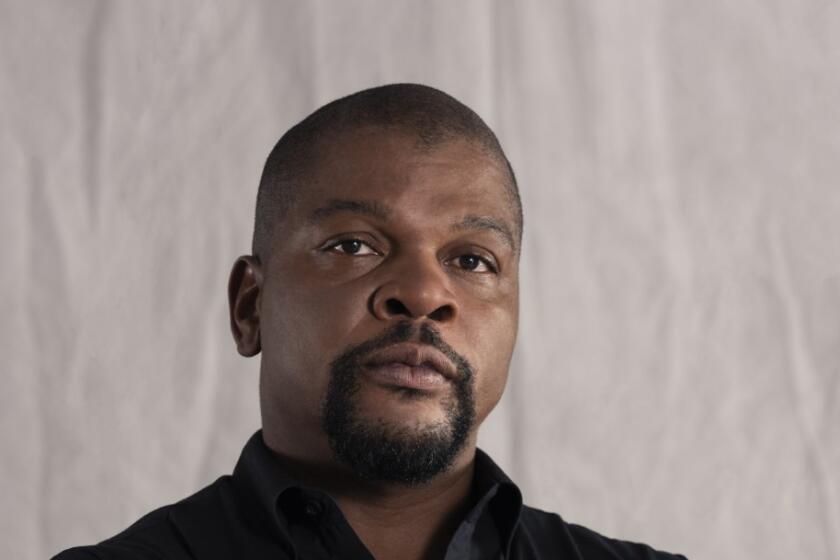Descanso Gardens’ ‘Elemental’ exhibition looks at art in different light
An exhibition at Descanso Gardens’ Sturt Haaga Gallery is presenting art in a different light, quite literally. “Elemental: Seeing the Light” includes luminous sculptures by 15 contemporary artists. It pairs California light and space movement pioneers Larry Bell, Helen Pashgian and Mary Corse, who have been creating installations in this tradition since the ‘60s and ‘70s, with so-called second-generation light and space artists who started in the ‘80s and ‘90s, such as Heather Carson, Yunhee Min and Fran Siegel.
------------
FOR THE RECORD:
“Elemental” exhibition: In the Feb. 15 Arts & Books section, a caption with an article about the exhibition “Elemental: Seeing the Light” at Descanso Gardens’ Sturt Haaga Gallery misspelled artist Eric Zammitt’s last name as Zammit. —
------------
Such light sculptures are typically meant to be displayed in carefully controlled environments, as they’re intended to play with light and perception. That often means stark white galleries without windows, lofty ceilings and overhead pinprick spotlights that help draw out shapes and shadows that morph as the light changes throughout the day.
By contrast, Descanso’s gallery consists of three interconnected spaces in a renovated former garage; large picture windows overlook a camellia forest and allow ample natural light.
“Some of the artists were really nervous about that,” said curator John David O’Brien. “But then they saw what we were going for and have embraced it. Part of the vision is to let the light in, to show these pieces in a more organic setting, as a collector would live with them in their home.”
The show, which also includes the work of monochromatic painters such as Max Hendler, is as much a meditation on light itself as it is about how the sculptures interact with the light. And if the light is providing new perspective on the art, the inverse is also true. The gallery, opened in 2011, is attempting to help visitors see the natural landscape outside its walls differently, through the eyes of artists.
“We didn’t want it to be a little submarine of art,” said David R. Brown, executive director of the La Cañada Flintridge gardens. “We’re inviting visitors to make connections between what they see in the gallery and what they see in the garden. We’re trying to speak to people in a different language about the garden — and the art.”
Twitter: @debvankin
More to Read
The biggest entertainment stories
Get our big stories about Hollywood, film, television, music, arts, culture and more right in your inbox as soon as they publish.
You may occasionally receive promotional content from the Los Angeles Times.







